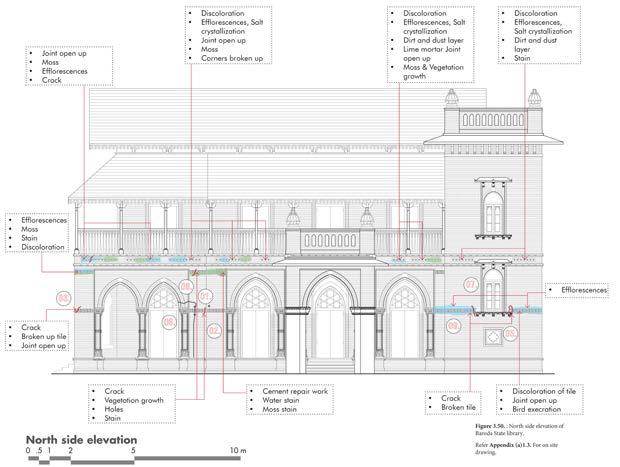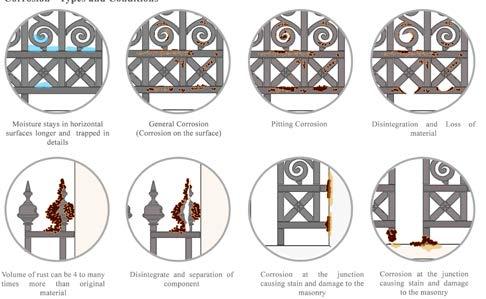
3 minute read
CR4003 Conservation Frameworks Ashna Patel Sabrina Khan
CR4003
Conservation Frameworks
Advertisement
Program
Architectural Conservation and Regeneration
Unit Assistant Zeus Pithawalla
Students
Anushka Mital Dhrishya V Gayatri Deshmukh Kanchi Choudhary Lakshmi R Mitali Gondaliya Neha Chandel Prakul Sardana Saatvika Pancholi Sarjan Dalal Satyajeet Chavan Sneha Gireesh Tejaswini Mirajkar Uravi Dholaria Ashna Patel Sabrina Khan
The Conservation Frameworks Studio of CEPT University is intended towards engaging students with Research Projects taken up in practice in order to provide students with fair exposure and depth in the practice of conservation. This studio is introduced as a one-time anomaly for online teaching. Considering the limited site engagement possible this semester, the students took up Research Projects based on secondary data, guided by an expert. In order to better prepare students for the studio, a two-week preparatory module was planned before the semester began. This module mainly covered an overview of typical methods and approaches to research and academic writing that enabled students to effectively develop a research proposal. Research Projects offered in this studio were: Traditional Knowledge Systems of Building Crafts and Earthquake Resilience; World Heritage Sites of Gujarat; Petroglyphs of Konkan; Disaster Risk Management Guidelines; and a Restoration Toolbox (Timber, Lime, Ceramic Tiles and Cast Iron). Learning outcomes for this studio enable students to: conduct independent and original research that contributes to the field of Conservation and Regeneration; identify and apply appropriate tools and techniques for data collection; develop an appropriate methodology and analytical frameworks; effectively present findings and implications through visual representation and writing; and develop an independent viewpoint on the chosen area of study. This studio culminated with students preparing Thesis Reports along with an open defense symposium where students presented five-minute elevator pitches of their research followed by questions from the audience.
Fig 1

Fig 1 Gayatri Deshmukh Chronology through the Mughal Empire Fig 2 Uravi Dholaria Mapping heritage sites around Rani-ki-Vav Fig 3 Saatvika Pancholi Thesis Stages Fig 4 Saatvika Pancholi Part front section of a pol house, Ahmedabad Fig 5 Dhrishya V Thesis Methodology for the Petroglyphs of Konkan
Fig 3 Fig 5
Fig 6 Anushka Mital Champaner Fort Fig 7 Gayatri Deshmukh Gaps in Traditional & Existing Knowledge Fig 8 Kanchi Choudhary Mapping the Narmada Parikrama Route Fig 9 Sarjan Dalal Condition Mapping of Baroda State Library Fig 10 Lakshmi R Interpreting corrosion


in Cast Iron
Fig 4


Fig 6
Fig 7


Fig 11 Sneha Gireesh Analysing authentic Chettinad lime plastering Fig 12 Neha Chandel Dhajji-Dewari construction - Structural members Fig 13 Saatvika Pancholi Conceptual Vulnerability Assessment at a settlement level, Ahmedabad
Fig 9
Fig 14 Uravi Dholaria Thematic trails - Interpretation of Rani-ki-Vav Fig 15 Anushka Mital A Self Sustaining Model, Champaner-Pavagadh Archaeological Park Fig 16 Sarjan Dalal First Floor Flooring


Layout - Baroda State Library

Fig 9 Fig 10 Fig 11



Fig 12 Fig 13



Fig 14










